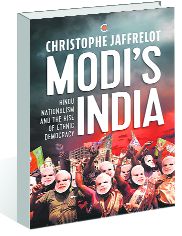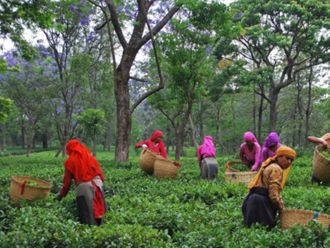Modi’s India: Hindu Nationalism and the Rise of Ethnic Democracy by Christophe Jaffrelot. Translated by Cynthia Schoch. Westland. Pages 639. Rs899
Book Title: Modi’s India: Hindu Nationalism and the Rise of Ethnic Democracy
Author: Christophe Jaffrelot
M Rajivlochan
This book, originally written in French, is a collection of weird judgments based on weirder presumptions about India. It has little to do with reality.
Christophe Jaffrelot says that only 34 per cent of BJP voters were from the upper castes in 2009. From this, he concludes that the BJP is an upper-caste party. He notices that Modi’s appeal has nothing to do either with the RSS or the BJP. Yet, his main argument remains that the BJP and the RSS are taking over the country. He points out that only 19 per cent of those who worked for Modi in the 2014 elections were party workers and that 32 per cent of them would have voted for another candidate had Modi not been the prime ministerial candidate.
Jaffrelot repeatedly uses the word “plebeian” for describing those who voted for Modi. “Plebeian” in French means someone from a lower social class; someone without culture and education.
“What factors made Narendra Modi so attractive for these plebeian voters?” he asks. Then he brings in the caste factor. He insists that voters identify with Modi because of his low-caste origins.
Promises by Modi to make Indians prosperous, Jaffrelot asserts, are false. The one testable example that he provides for his claim turns out to be bogus. He asserts, in this book published in 2021, that 60 per cent of toilets constructed in the Swachh Bharat Abhiyaan do not have water. The evidence he provides for this is from a news report published in 2017. That in turn cites an NSSO survey of 2015-16, for a programme launched in 2014!
The other schemes that he berates include the Jan Dhan Yojana and the Ujjwala Yojana. He dismisses them as of no consequence since they merely brought dignity to the poor.
In order to make sense of such a book, it is important to remember that Jaffrelot is coming from a France that is undergoing a churn, feeling very threatened with the influx of Muslim migrants, with farmers and workers routinely disrupting normal life, and the concomitant rise of a white French right wing which threatens to do uncivil things to anyone with whom they disagree.
The threat of uncivil things in France is very real considering that till just a few decades ago, the French, along with other white Europeans, were busy oppressing the rest of the world in the name of saving it.
Jaffrelot projects onto India all his fears rooted in such challenges to civil existence in France. His analytics on India are contaminated by his fears for France. Look, for example, at the matter of immigration. Immigration is a key issue in French electoral politics, not in India. Each year tens of thousands of immigrants are deported from western countries; 19,000 in 2019 just from France. None from India.
Immigrants to France are actually required to sign an “integration contract” to abide by French values and norms. Burqa-clad women excite great animosities in France. Not so in India.
The concern for civility that Jaffrelot shows for India might be more suited for a France in throes of undesirable change. Despite all their self-professed enlightenment, these were societies given to bloodshed and oppression on a colossal scale. The completely unreal analysis of India in this book is Jaffrelot’s way of using India as a foil to feel scared and concerned about changes in his own society.














